YAYOI KUSAMA connected the cosmic dots in her life and turned adversity into opportunity.
Battling inner demons gets the better of most people, but Kusama turned this into a platform to show off the spoils of her personal wars. The result is an amazingly eclectic collection of works spanning seven decades in a range of styles that include Pop, Surrealism, Minimalism, Performance and Conceptual art.

Arguably the most important Japanese female artist living today, Kusama moved to New York in 1958, showcasing her work with other pop artists. She tried her level best to make an impression, often using sexual innuendo as a tool of choice. While it opened up her mind to new possibilities, it also showcased an artist who was ahead of the curve.
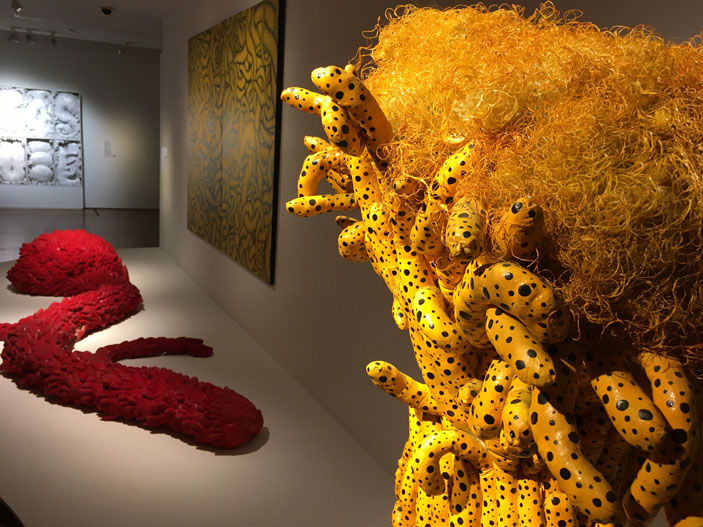
By the 1970s she found herself back in Japan, having lost her money and standing as an artist. The downtime was spent mending herself and her reputation in a Tokyo mental hospital. As she rebuilt her resolve and appeal, her studio, beside the hospital, developed a reputation for becoming a factory of her works.
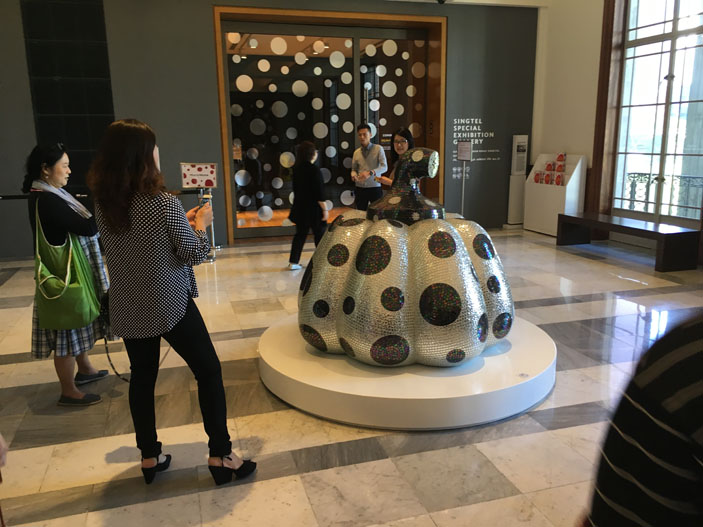
A Colourful Revival
And, so Kusama’s revival has blossomed and her art has gained stature globally in phenomenal fashion. Her art viewed through the veneer of mental illness, has connected with audiences around the world, perhaps reflecting that fine line we all walk in life.
Still Prolific
Kusama is two years shy of 90 and is still painting intricate patterns with a steady hand. Red wig firmly in place and invariably in a polka dot ensemble, she continues to make inroads into her world of dots and pumpkins, mirrors and sexuality. She’s also easily switched modes, comfortably lending her spots to the fashion world.
Louis Vuitton breathed new life into her art, and her art seems to have filled her creative sails yet again.
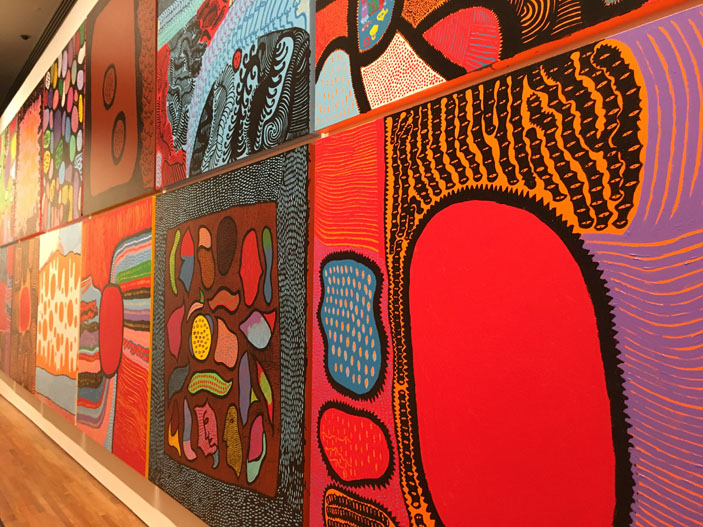
Having contributed to the peace and love era, Kusama’s works straddle film, sculptures, art and installations that open windows into the mind of her creative oeuvre.
Her works are on display at the National Gallery Singapore from 9 June to 3 September. Life Is The Heart Of A Rainbow brings the viewer on a journey through her art, but more importantly shows the relevance of her work over time.
The last time she was here, for the 2006 Singapore Biennale, she had the trees along Orchard Road wrapped in polka dots. Although she doesn’t travel as much these days, her spotted art serves as a compelling calling card.
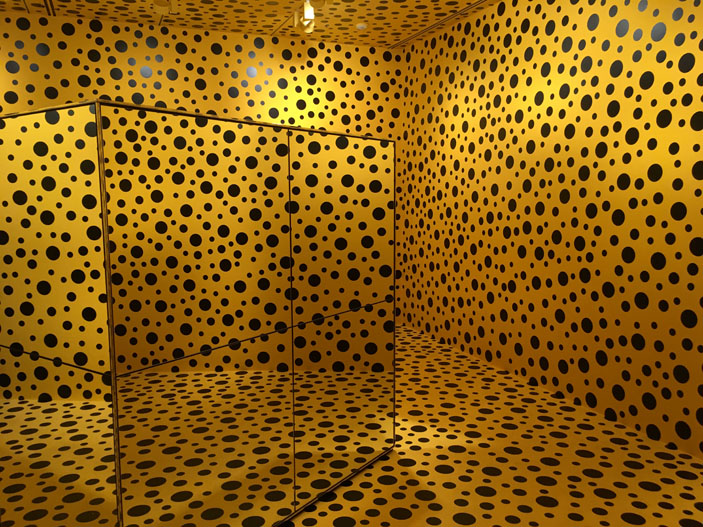
From the big yellow balls with the black spots that happily greet those entering the Gallery, through to the phalluses that project her fear of sex and the humble pumpkin

that has been given a place of importance, the viewer is fed an expected albeit eclectic diet of dots and eccentricity.
When it gets to the rooms with the psychedelic sculptures, dotted white tulip insallations, or Venus de Milo in spots, you’re left somewhat bemused but amused and enchanted that Kusama takes such liberties…and gets away with it.
Her infinity rooms are quite spectacular, with mirrors playing tricks as golden pumpkins stretch out endlessly, or colours that mesmerise with their flickering intent.
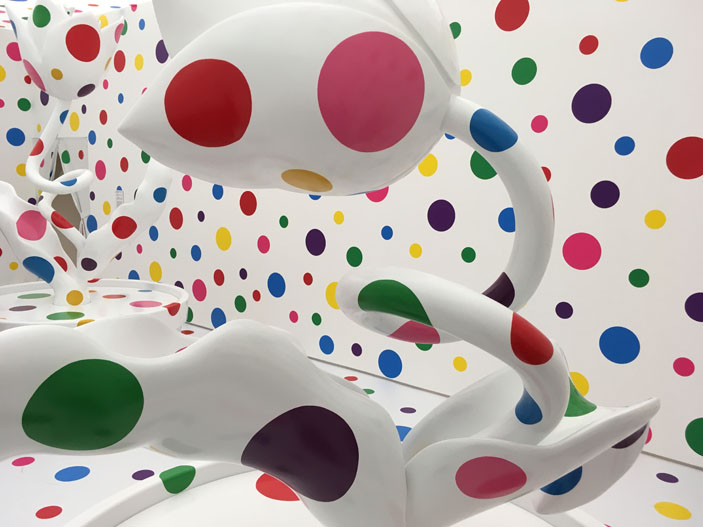
To a large extent, Kusama’s personal journeys into art, become the visitor’s personal journey. Each piece speaks directly to the viewer. Each interaction yields its own emotional connection.
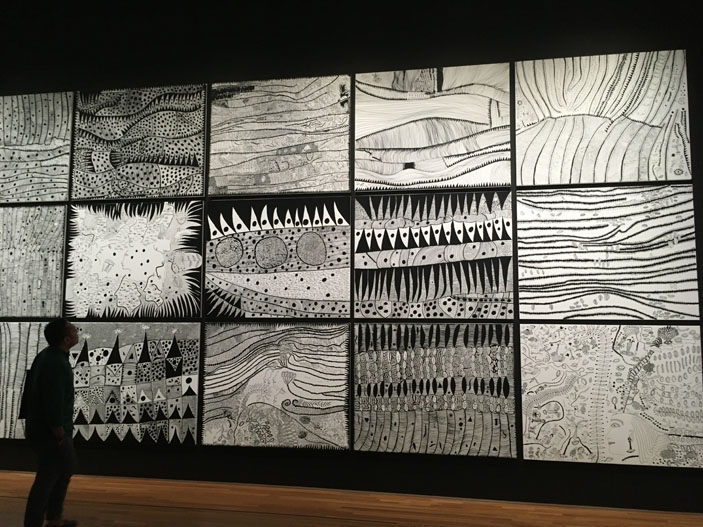
Approaching her art with an open mind is only going to make the process of appreciating it all the more enjoyable. There are so many things going on, something is bound to connect.
Considering that her art is a reaction to her personal troubles, and she is still connecting the dots in her life, it must be gratifying for her that her pain is turned into joy for others.
Click HERE for more information on the exhibition.






















